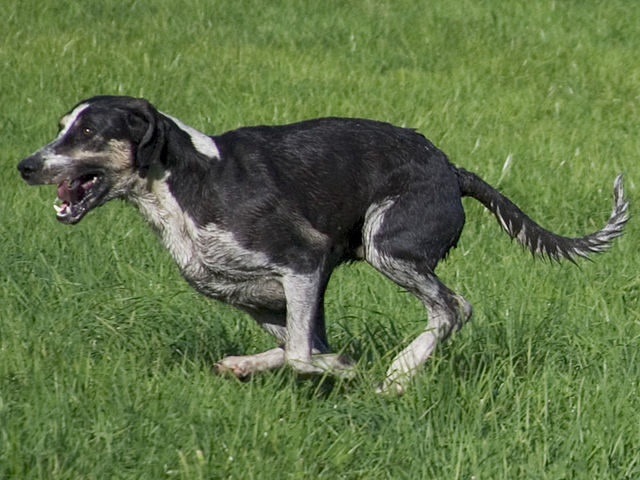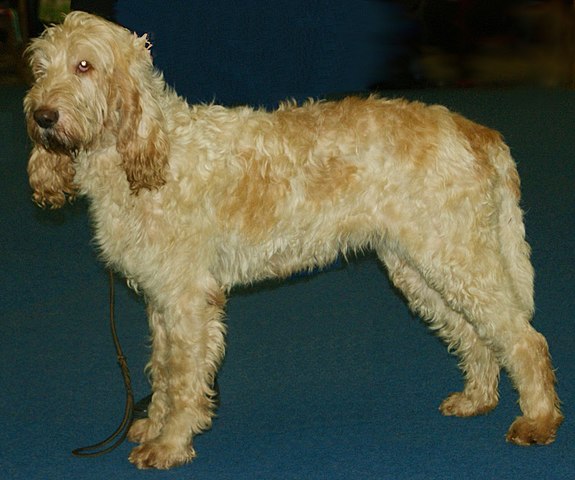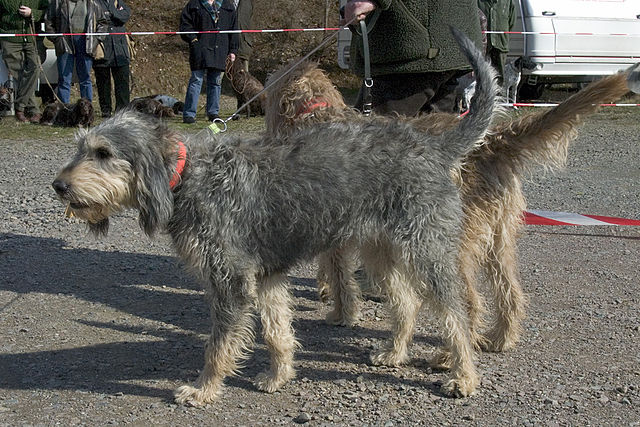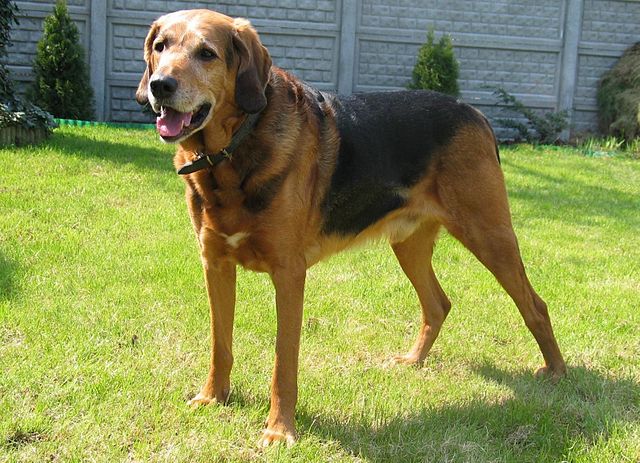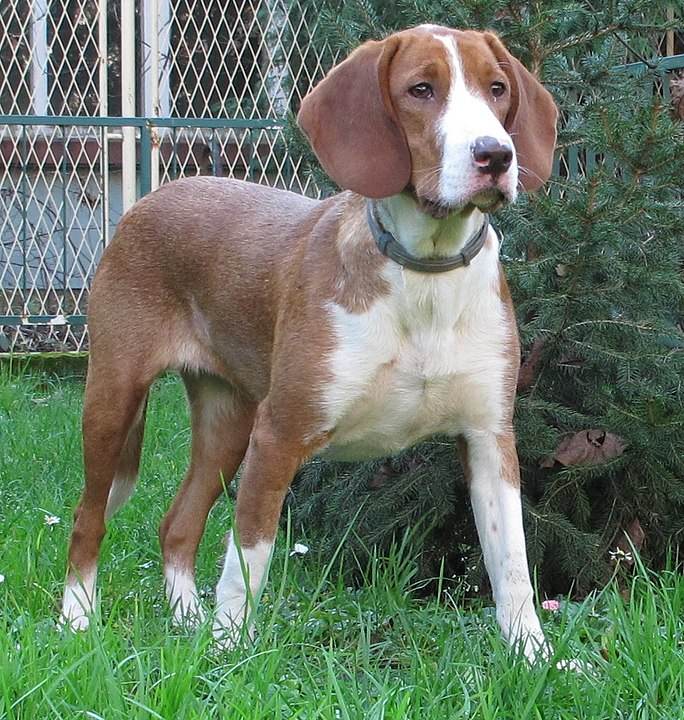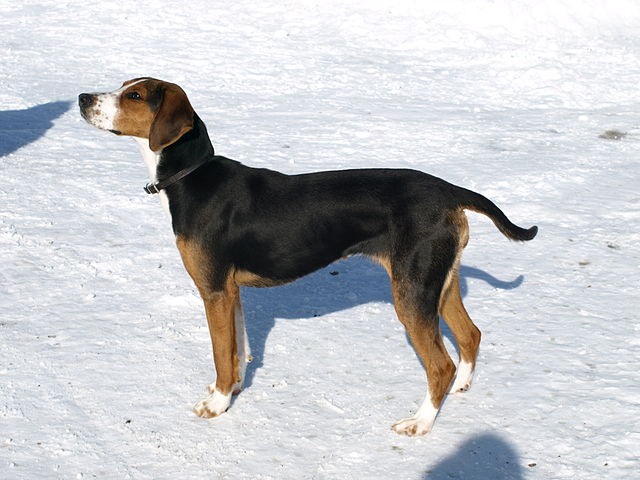The Dunker is a Norwegian scenthound that is rare in most of the world, seen mostly in Norway and Sweden. There are only about 150 born every year, however people who own them recognized the raw talent and wonderful nature of this uncommon breed. Bred in the late 1800’s to hunt hare by a man named Wilhelm Dunker (the breed’s namesake), this is an excellent hunting dog with a talented nose. Known for the special talent of being capable of hunting even in heavy snow during the winter months, this is a great choice for those who live and hunt in colder regions of the world. The cold-weather aptitude was the reason this dog was created in the first place!
Medium in size, the Dunker tend to fit into most average-sized homes. They have a powerful frame that is sturdy and robust, and low-set hanging ears. One of the most unique and interesting physical aspects of these hounds is the color – which is either black or blue marbled with pale fawn and white markings. The coat itself is fairly short (without being too short), dense and hard to the touch. It is this thick and protective coat that keeps him warm in the intense cold.
Dunkers can be vocal when actively hunting. If living without enough mental and physical stimulation, they can also become problematic barkers/howlers. In the home they are easygoing and gentle a long as they are provided enough exercise and plenty of time outside! As pack hunting hounds, they get along very well with other dogs. They are also friendly with people as well (including strangers), and get along great with kids with whom they are tolerant and forgiving. In fact, this is a poor choice for a guard dog because of their overly friendly and trusting nature. With their family they form strong, loyal bonds. Like many scenthounds, they are iffy in home with cats and small pets because of a high prey drive. Socializing them to cats from a young age may help… or it may make no difference, depending upon the line and the individual hound.
Dunkers do best in homes with backyards for them to run around in, and neighbors that are spaced well apart (because of the barking). Owners won’t need to worry too much about grooming, as it is an easy and quick chore, however the thick coat will shed rather profusely throughout the hotter parts of the year. A bath every month and a half, combined with a good brush out once or twice a week will help to pull the dead coat out and reduce shedding somewhat. A weekly tooth brushing and nail trimming, combined with weekly ear cleaning, will complete the grooming routine.
Dunkers are independent-minded however do have a talent for learning and can easily be taught obedience by owners willing to put in the time. Owners need to possess patience, however, as Dunkers can also be fairly stubborn when they don’t feel like training! Furthermore a high prey drive means the brain will turn off when the nose turns on – the appearance of (or odor of) a prey animal is a distraction of the highest order! This means that off-leash training will be a difficult endeavor, and some hounds will never be completely reliable when off lead. Those experienced in living with and training scenthounds will have an easier time teaching this hound than pure novices. Persistence and patience are definitely key, as well as knowing when to be firm and stand your ground about household rules!
Dunkers requires a lot of daily exercise, however can make good companions for active individuals – particularly for those who hunt. Owners who do not hunt will have a harder time satisfying the physical and mental needs of this breed – as he has been bred to work rather than strictly as a pet. He was created to have lots of stamina in order to track for miles, which can be difficult to replicate for many non-hunting households. A walk around the block is not good enough – this hound requires at least an hour of jogging, or an equivalent amount of activity daily. Be prepared for a lot of fetch and Frisbee to supplement those jogging sessions! Without adequate exercise, he can become destructive and very frustrating to live with.
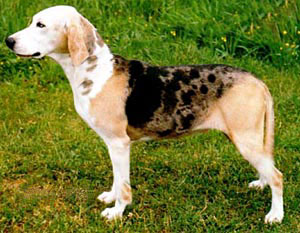
Picture By DogWiki picture pool

